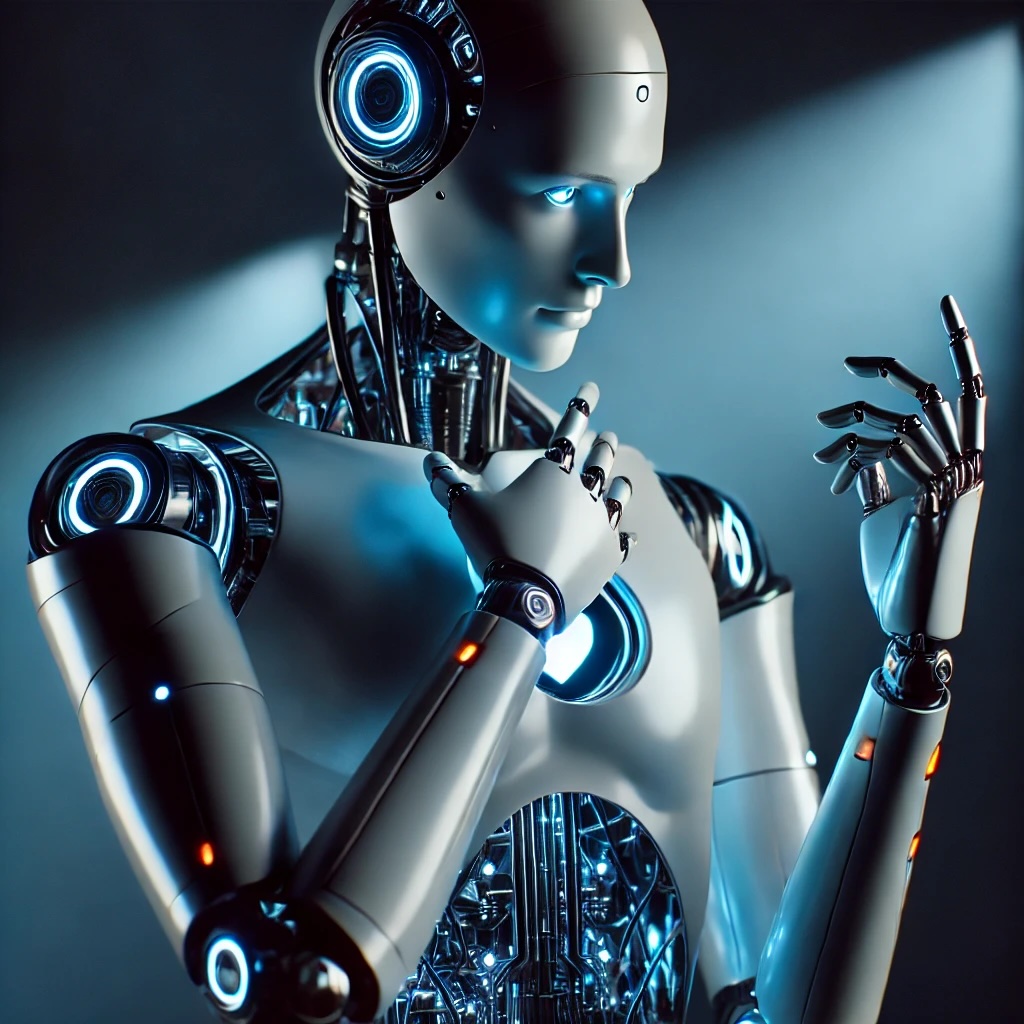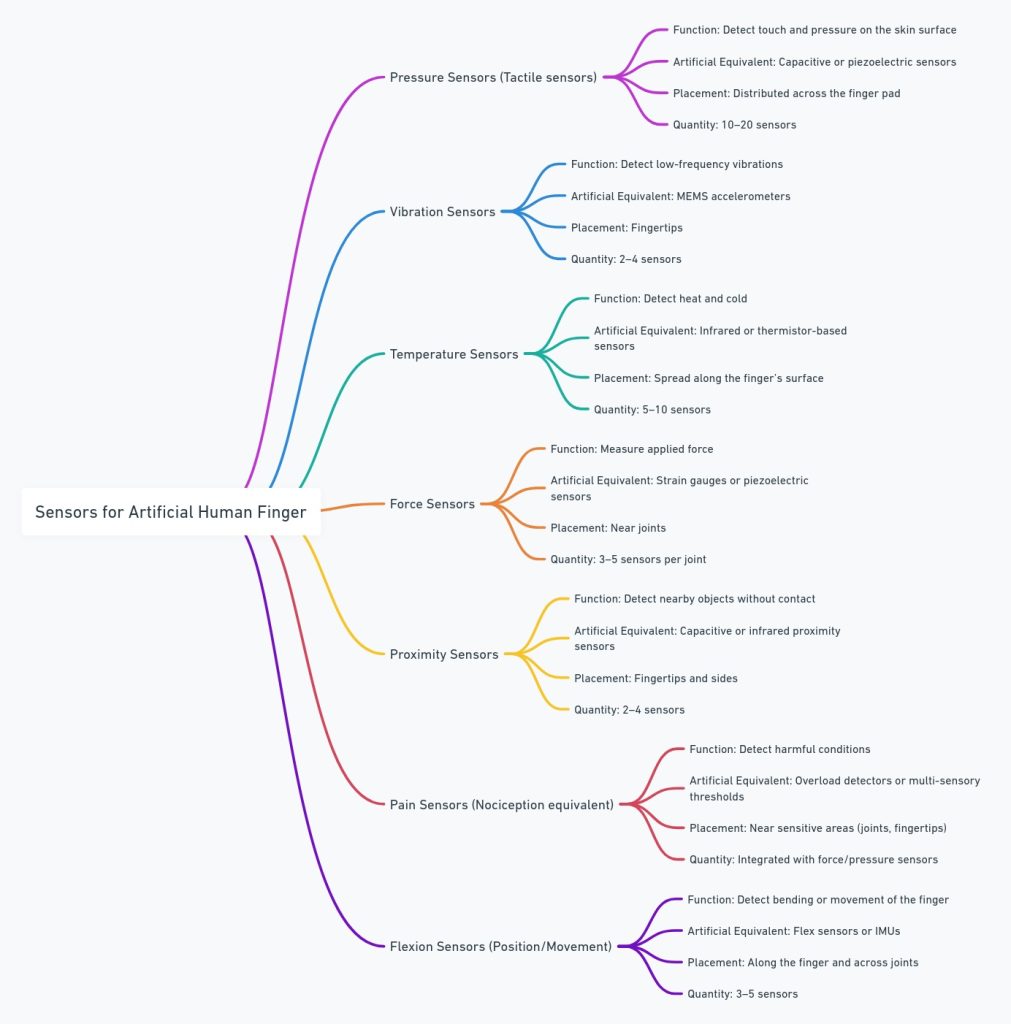The most persuading definition for me in terms of self-consciousness is the ability of the robot to connect with its environment in terms of understanding the environment around it and understanding the feelings. We can refer to the feeling as the ability to sense, and in the robotic environments, it can refer to the sensor, while the sensing system for the human is far more complex than the current advancing in the robotics sensors and not at all comparable. In order to mention that the robot is humanoid, a much more complex sensing system beyond the current advanced technology is needed to be imitated. For example, in a small finger that immitate the sensor or neurological system for human (See Figure 1). It’s not only about the small sensors that are in a small area of the human body, which can be manufactured with advanced technology. However, the perception of such data within a millisecond in the neurological system. This data by itself is considered a data centre by itself.
“There 's no current theory or scientific defintion to address the physical essence of consiousnsess ”
consciousness may be defined as a third dimesion of the data , it is not just a couple of equation , however a much more sophisticated subjective experience that integrate all the memory , the sensing and emotional experience that define that experience. Delivering a robotic with such subjective experience required sophistcated neurological system of sensors and perseptive knowledge.
So when we compare the complex human system to a robot , its hard to mentioned a humonid robot. While it term of cognitive abilities , mathmatical , lingusitic and memory , given these robots are consiouscly trained , they will be inferior to their human counter part . these robotics in term of self awareness , sensing and consiousness are still ways to go and there is no comparable forms to the human neurological system.
Some neuroscientist believes that consciousness is not about the basic sensory processing data in the brain cortex; for example, there is a highly complex part of the brain, such as the cerebellum, which is considered to have no role in the conscious experience. It appears to have a role in non-consciousness experiences such as requiring balance in bike riding. Other theories suggest that consciousness is just a matter of order between the brain and the ecosystem. While the unconscious mind is essential for human experience, it might lead to wrong, unthoughtful decisions. The unconscious act is a set of experiences that are understood very well and practised without any need for self-awareness.
It’s hard at the end to compare the human cognitive abilities with those robotic counterparts, which drives unfair comparisons. The only barrier for humanoid robots is their ability to be self-conscious and self-awareness. With the current technology of sensors and actuators, it’s impossible to imitate the human nervous system or even a small portion of it.

